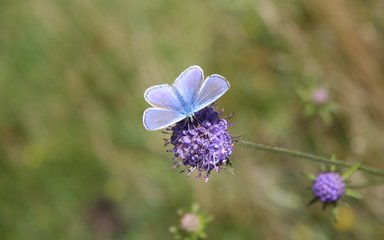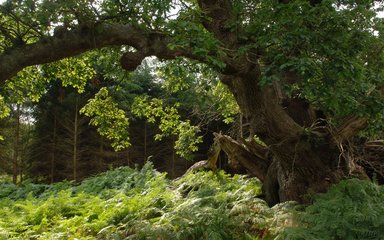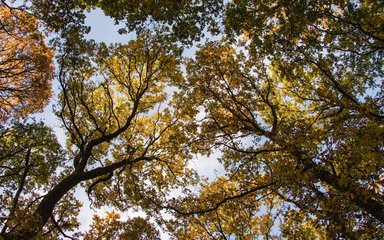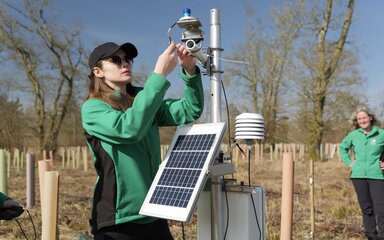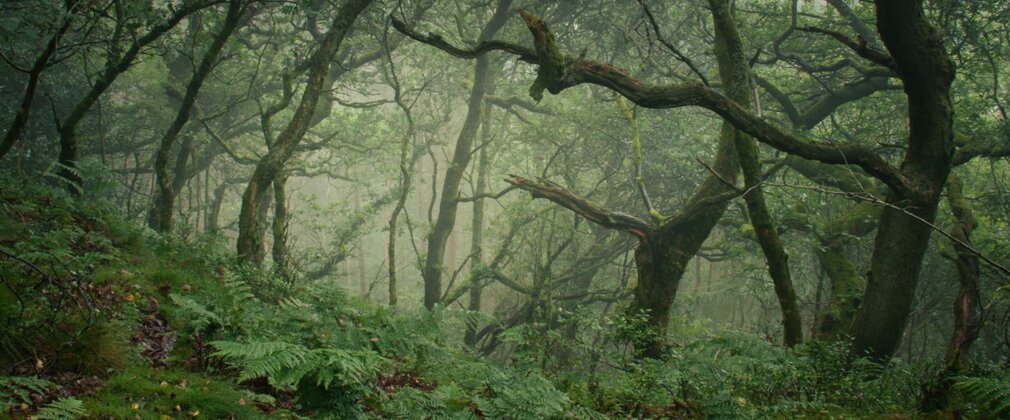
At Forestry England, we have a responsibility to care for and protect some of the most important landscapes in the country, including woodlands with centuries of natural and cultural history.
We have met, and are still meeting, our long-term commitment to keep restoring plantations on ancient woodland sites (PAWS), which form an important part of the nation’s forests. This restoration work is crucial for preserving our irreplaceable woodland heritage and enhancing biodiversity across the nation's forests.
Discover more about PAWS, why they matter, and how we’re using our expertise to restore them.
What are plantations on ancient woodland sites?
Plantations on ancient woodland sites, known as PAWS, are ancient woodlands that were planted with conifers or other non-native trees. This happened often in the 20th century as part of efforts to rebuild timber supplies after wartime deforestation.
At the time, the conservation value of these ancient woodlands was not fully understood, and the focus was mostly on meeting national timber demand. The ecological value of these sites was reduced as a result.
Important and historical habitats
Although these sites may look a lot like other plantations today, if you look closely, you can see signs of their long history, such as mighty veteran oak trees, bluebells and other wildflowers. Hidden beneath the surface, PAWS still have many of the things that make ancient woodlands special: rich soils and vital underground ecological networks. That’s why they're a high priority for restoration, and we’re working hard to do our bit.
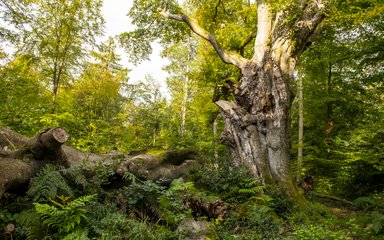
Our commitment to restoring PAWS
At Forestry England, we're committed to sensitively and gradually restoring all of our PAWS sites, which cover around 43,000 hectares across the country. We have a very clear target for this: by 2044, we will have improved the semi-natural score of these sites by at least one class, moving them towards a more dominant native canopy and a richer, more natural woodland environment.
We met the government’s first target, which was for 'the majority of PAWS either being improved or under gradual restoration' in 2007 and this important work continues today, with all of our PAWS sites currently in the process of restoration. This means we have actively removed non-native tree species from all our PAWS, and have plans in place to continue to do so. For some sites, this has been more challenging than others, for example due to poor access for machinery.
Our goal is for our restored ancient woodlands to consist of at least 80% native tree species when they mature, creating more resilient and biodiverse habitats. Changes to the types of trees and how they're managed may need to happen gradually, especially where protected wildlife like red squirrels live.
What does ancient woodland restoration involve?
Restoring PAWS can be difficult and needs professional expertise, care and attention. Each site is carefully assessed to help us decide the best way to work, taking into account its unique characteristics, local ecology, and the surrounding landscape. There are several methods we use to gradually restore these special woodlands:
- carefully removing trees - we selectively remove some non-native trees while protecting the special features that make ancient woodlands unique.
- creating small clearings - we create small clearings to mimic traditional woodland management, such as coppicing, allowing more light to reach the forest floor.
- letting nature help - we encourage native trees to grow naturally from seeds, while also planting native trees in some areas.
- planting helper trees - sometimes we plant fast-growing trees to protect and nurture young native trees as they establish.
- managing wildlife - we manage deer and non-native grey squirrel populations to protect both trees and the important plants growing on the woodland floor.
Monitoring and support
Throughout the restoration process, we monitor how the woodland responds and support wildlife returning as the ecosystem gradually re-establishes itself. We've mapped all PAWS in our care and given them scores so we can track our progress.
Each site is different and presents its own set of challenges, but with patient, consistent management, the ancient woodland characteristics can return and begin to thrive once more.
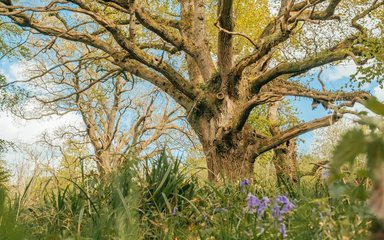
Restoring woodland and growing timber - together
Restoring ancient woodland and producing sustainable timber complement each other: they are part of the same long-term vision for healthy, resilient forests. Another core part of our work is creating new woodlands as sources of sustainably-grown timber, alongside being open for public access and enjoyment and becoming thriving homes for wildlife.
Many of the trees originally planted on PAWS were grown to supply timber for the nation to be ready for when it was urgently needed. As these plantations mature, we carefully harvest them in a way that supports the woodland’s gradual return to native, broadleaf species.
This approach allows us to reduce the country’s reliance on imported wood and increase the use of homegrown, renewable materials, all while restoring complex ecosystems and protecting the legacy of England’s ancient woodlands.
What next?
Restoring planted ancient woodlands takes time and careful management. We are making progress, and whilst we’re pleased with our achievements so far, we have only been successful with the easy wins.
We’ve got a long way to go, and in the midst of a nature crisis, we need to move faster. We’re strengthening our ability to deliver PAWS restoration through training, guidance, and direct support to our staff on the ground - ensuring these magnificent ancient woodlands are brought back to their former glory. Our approach recognises that these woodlands are not static relics, but living ecosystems that benefit from thoughtful management that respects their unique heritage and ecological value.

